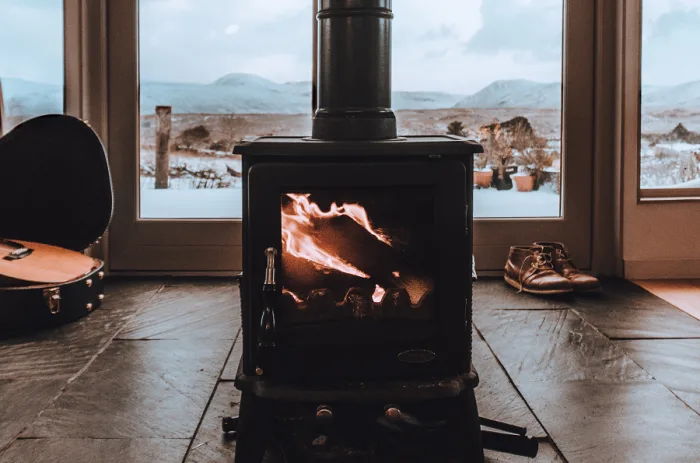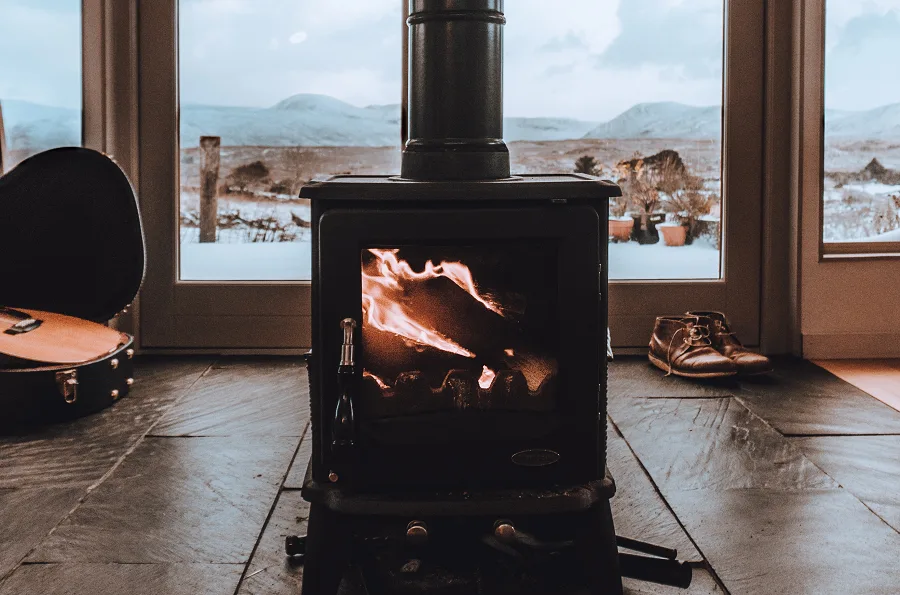
The problem with wood-burning stoves
Alaska has joined other places in Canada and the U.S. in regulating the use of older wood burning stoves, which have been linked to adverse health effects and pollution.
Starting January 8, some Alaskan residents will be required to register their wood stove, per new legislation mandated by the Alaska Department of Environmental Conservation.
It's the latest of several municipal by-laws put in place across Canada and the U.S. to limit the use of older stoves, which can be a significant generator of winter pollution and smog.
"We're working towards cleaner air, the overall goal is to work towards cleaner air, not to track who has what wood stove," Steven Hoke of the Alaska Department of Environmental Conservation told KTVF about the new Alaskan regulations.
"It helps them with further projections and helps improve air quality. If we can figure out how many are out there, and where they're at, geographically ... we can start to work towards having that cleaner air."

Older wood burning stoves have been linked to adverse health effects. Photo courtesy: Unsplash/Michael Shannon
British Columbia officials are trying a different approach to clear the air, with the Wood Stove Exchange Program.
Each winter, residents in eligible communities are offered a $250 rebate for replacing older wood-burning stoves to a cleaner-burning device, or a $400 rebate for migrating to a qualifying electric heat pump, a gas or propane stove or pellet-fueled stove.
"Well over 7000 wood-burning stoves have been replaced by cleaner-burning models since the program began," the government says on its website.
"This is a reduction of approximately 300 tonnes annually of particulate matter released into the air."
WOOD BURNING A SIGNIFICANT SOURCE OF WINTER SMOG
Winter air quality can often be worse than summer air quality, according to Weather Network science writer Scott Sutherland.
"The winter months are when we are most likely to see what's known as a temperature inversion, where cold air near the ground is capped by a layer of warm air above it," Sutherland explains -- adding that this is especially true in mountain valleys, where these conditions can persist for days.
"As long as this inversion is in place, the air near the ground becomes very still, and any pollutants emitted into the air - including the smoke from fireplaces and wood-burning stoves - becomes trapped, causing air quality in the area to deteriorate."
Smoke from wood-burning can cause eye, nose, and throat irritations and -- in some cases -- headaches, nausea, and dizziness, according to the Government of Canada.
It can also exacerbate pre-existing respiratory conditions. People with heart or lung problems and children are among the most vulnerable.
"Some people use wood as their main source of heat, while others have wood stoves as a back-up. But wood smoke contains a number of pollutants that can be harmful to your health," reads a statement on the Government of Canada website.
"In communities where wood heating is common, wood smoke can be responsible for as much as 25 per cent of the airborne particulate matter, 8 per cent of the VOCs [volatile organic compounds, which are linked to adverse health effects], and 7 per cent of the CO [carbon monoxide] in the air."
MONTREAL BY-LAW
On October 1, 2018, Montreal, Quebec enacted strict legislation that prohibits wood-burning stoves or fireplaces in the city's 19 boroughs. Newer devices that are certified to emit no more than 2.5 grams of fine particles per hour are permitted.
Before the bylaw, wood-burning was the second-highest source of fine particle emission in Montreal (39 per cent), behind transportation (45 per cent) the city's official website says.

In October 2018, Montreal banned all old wood-burning stoves. Photo uploaded to The Weather Network by Steve Bax.
SAFETY TIPS
Here are some safety tips to reduce the environmental and health impacts of wood-burning from the Government of Canada:
Choose a low-emission stove
Keep your stove properly maintained
Have your chimney regularly cleaned
Use your dampers
Avoid burning wood on high-pollution days
Use dry, seasoned wood that has been stored in a dry area for at least six months before use
Small pieces of wood burn more efficiently and are a better source of heat
Never burn wood that has been painted or chemically treated or wood that is rotted, diseased, or mouldy.
